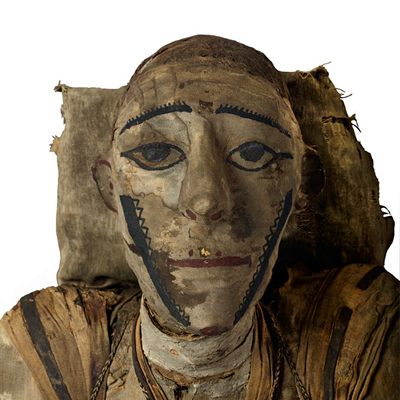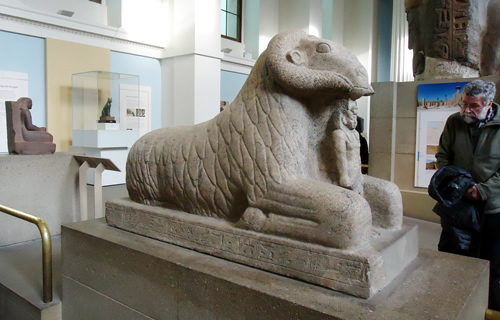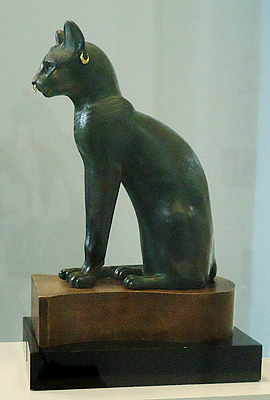« Knitting and Stitching at Olympia | Main | Kempton Steam Museum »
Thursday March 12, 2015
Mummies - eight lives

We went for a day out to catch the exhibition "Eight mummies, eight lives". I'm not sure Rob was that keen but I (like the rest of the populus apparently) am always fascinated by mummies. Anyway - after a good lunch to make up for the fiasco involved after thinking I had lost my purse (always a good start to the day...) - I think he may have been converted.
The eponymous 8 mummies, dating from about 3500 BC to AD 700, and coming from a range of sites, were not simply displayed, but through the use of a CT scanner a lot of additional information was visible without having to damage (or one might say desecrate) them. There were excellent computer graphics showing "virtual" unwrapping, revealing sacred objects within the wrappings - and they were able to produce 3-D computer "print outs" of the objects - all of which added so much to the experience.
One thing that was true of more than one of the mummies is that they seemed to have been prepared seemingly in a hurry and used "off the peg" cartonnage cases - one being intended for a woman and used for a child of about 7 and another being crudely extended to accommodate a man's (probably unusual 5' 7") height.
The chap above is a later Roman mummy, unusual because he was wrapped as a living person, with arms and legs wrapped separately, and his face painted on the linen. There are several mummies like this in other museums in Europe and they all seem to have appeared from Egypt in the 1820s; however, sadly, although it seems likely they were found together, it's not known exactly where or if indeed that is the case.

Afterwards, we roamed the permanent exhibits, where I found the Ram sphinx of King Taharqo (1069 BC):

The supreme god Amun, here represented as a ram, protects a figure of King Taharqo, The ruler's forehead bears two cobras instead of one, an assertion of sovereignty over both his native Kush and Egypt, which the Kushites had conquered. Taharqo built and enlarged temples for Amun across his enormous realm. This and other ram sphinxes lined a processional avenue leading up to the temple of Amun at Kawa.
I was also interested by this famous bronze cat, given by Major John Gayer-Anderson in 1939. Detailed examination with x-rays shows past damage and structural repairs, as well as indicating how it was originally cast.

Posted by Christina at 9:28 PM. Category: Art and Culture
